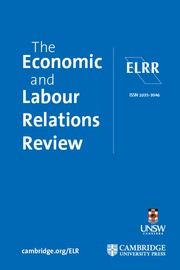Article contents
Union responses to regulatory change: Strategies of protective layering
Published online by Cambridge University Press: 01 January 2023
Abstract
Changes to the Australian regulatory landscape over the past three decades of global liberalisation created regulatory uncertainty for unions. Coupled with membership decline and internal restructuring through union amalgamations, they prompted an important reorientation by unions (back) to the workplace, and precipitated different strategic decisions and organising challenges. However, the proliferation of fragmented employment relationships rendered workplace-centred organising an insufficient response. As a result, some unions experimented with ways of supplementing existing legal frameworks by other regulatory initiatives, through campaigns that resulted in the layering of regulation. In this article, we examine attempts by three unions – covering garment workers, road transport workers and aged care workers – to address the needs of members in garment homeworking, road transport and aged care in a contested regulatory environment.
Keywords
Information
- Type
- Articles
- Information
- The Economic and Labour Relations Review , Volume 26 , Issue 4: Special Collection: Union Organising and Revitalisation , December 2015 , pp. 614 - 630
- Copyright
- Copyright © The Author(s) 2015
References
- 2
- Cited by

